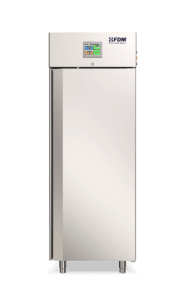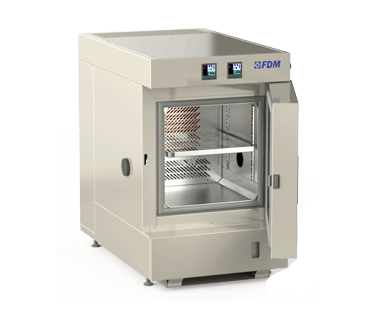
About 70% of the planet's surface is covered with water, water that is then dispersed into the atmosphere in the form of humidity, rain and storms. Not to mention exceptional phenomena such as floods and tsunami.
All things considered, it is natural that being water-resistant is a fundamental requirement of a wide range of materials that surround us in everyday life.
The Climatic Chamber with Water Spray System is used to carry out this type of test.
Perform
Climate Stress
Discover the new series of Climate Chambers for controlled climate testing
Which materials are subjected to the Water Spray Test?
For the reasons explained above, there are many materials to be tested with a water spray system. At least four industries are affected by the process:
- Electronics: most of the electronic devices run the risk of being accidentally exposed to water jets.
- Automotive: cars and means of transport, in general, must prove a certain resistance to atmospheric factors, especially in regard to their electronic components
- Construction: water infiltrations due to rain and humidity are one of the first requirements to be met for modern buildings
- Textile: a wide range of fabrics, including the clothes we wear every day, can have varying degrees of water resistance which must be technically certified
What are the regulations in force?
In order to market a device that is functional and safe in its working or use conditions, it is necessary to comply with those requirements that are established by international standards of the relative product category.
There are various types of rules and regulations that recommend a water spray test on materials and they are divided by categories, let's see them:
- Electronics trade: the safety of electronic components is established internationally by the International Electrotechnical Commission and the reference standard is IEC 60529.
- Construction trade: the safety standards relating to building materials are drawn up by the International Organization for Standardization, specifically by the standards indicated in ISO 15686. In Europe, reference is also made to EU regulation no.305 / 2011.
- Textile trade: textiles are also regulated by ISO, specifically by ISO 4920:2012 which establishes the criteria of water repellency and water resistance of fabrics.
- Automotive trade: a unique case concerns the automotive sector. Given the complexity of the materials involved, there are many regulations that intervene in certifying the safety of this or that component. We list a few: ASTM G154 / G155, ISO 4611: 2010, and ISO 16474-1:2013.
You cannot find the ideal chamber for your test?
Create your own environment, according to any test requirement
What does a Climate Chamber with a Water Spray System do?
The water spray system can be equipped on a suitably modified standard climatic chamber.
In this type of test, the material is placed inside the cell and is exposed to increasing jets of water based on the level of protection required. The volume, width and intensity of the jet can be easily adjusted from outside the machine.
FDM Climatic Chamber with Water Spray System
The FDM climatic chamber equipped with a water spray system is the ideal solution to perform the water spray test in all the sectors we have talked about.
By adjusting the water spraying system according to pre-established modules, it is possible to reproduce the effect of rain, windy rain and thunderstorms on any type of surface. At the same time, the humidity and temperature parameters can be altered to verify the resistance of the material in different environmental conditions.
Would you like to receive a quote or do you have questions about the product?
Contact us to receive more information about this Product.



